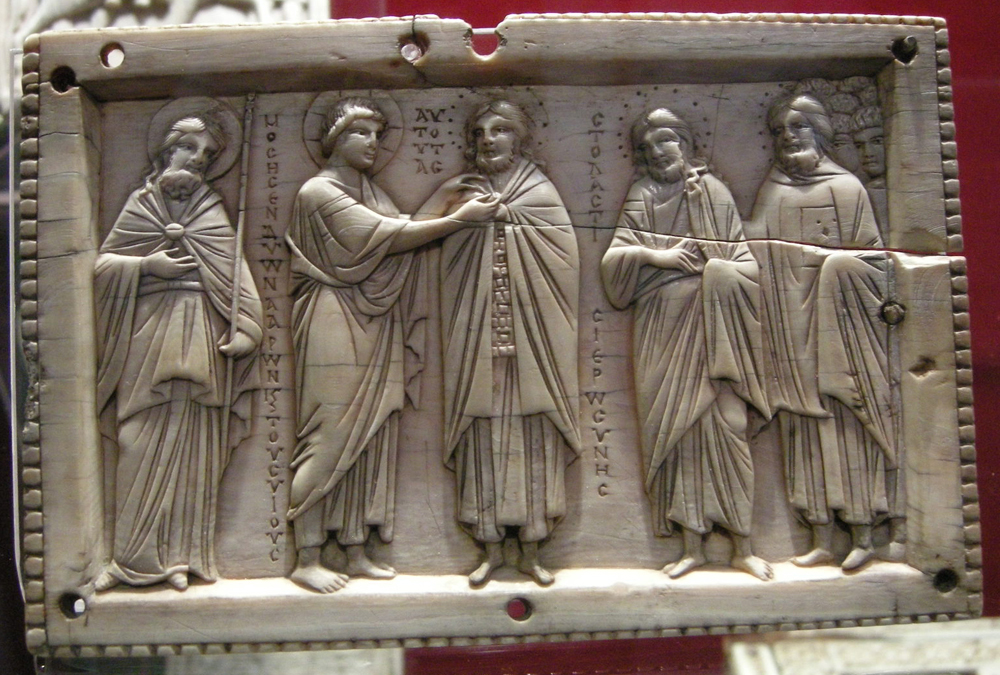Moses Invests Aaron and His Sons in the Sacerdotal Garments

10th century
Ivory tablet
Museo civico medievale, Bologna, inv. 789.
The Greek inscription means "Moses invests Aaron and his sons with the priestly garments." Aaron has four sons; two are shown full-length, and the faces of the others are seen in the upper right.
The priestly vestments are prescribed in Exodus chapter 28, which is much too detailed to be followed precisely in this small plaque. But as prescribed Aaron wears the breastplate of verses 15-21 and the sash of verses 4 and 39; and all four figures central wear loose trousers (verse 42). Over the breastplate Aaron wears a long mantle with a pectoral clasp; this is not in Exodus but is worn by Aaron, Caiaphas, and Melchizedek in many images from the first millenium A.D.
The youthful figure investing Aaron has the crossed halo that is always reserved for Christ or the Father. The meaning seems to be that the investure was commanded to Moses but in spiritual reality was an action of the Son of God. The figure on the left should thus be Moses himself, with his rod, uncrossed halo, and front-clasped mantle. Thus the outermost persons in the composition, Moses on the far left and the audience of heads on the far right, refer to the visible event while the central action testifies to its invisible meaning.
Read more about images of Aaron.
Read more about images of Moses.
Source: this page at Wikimedia Commons.